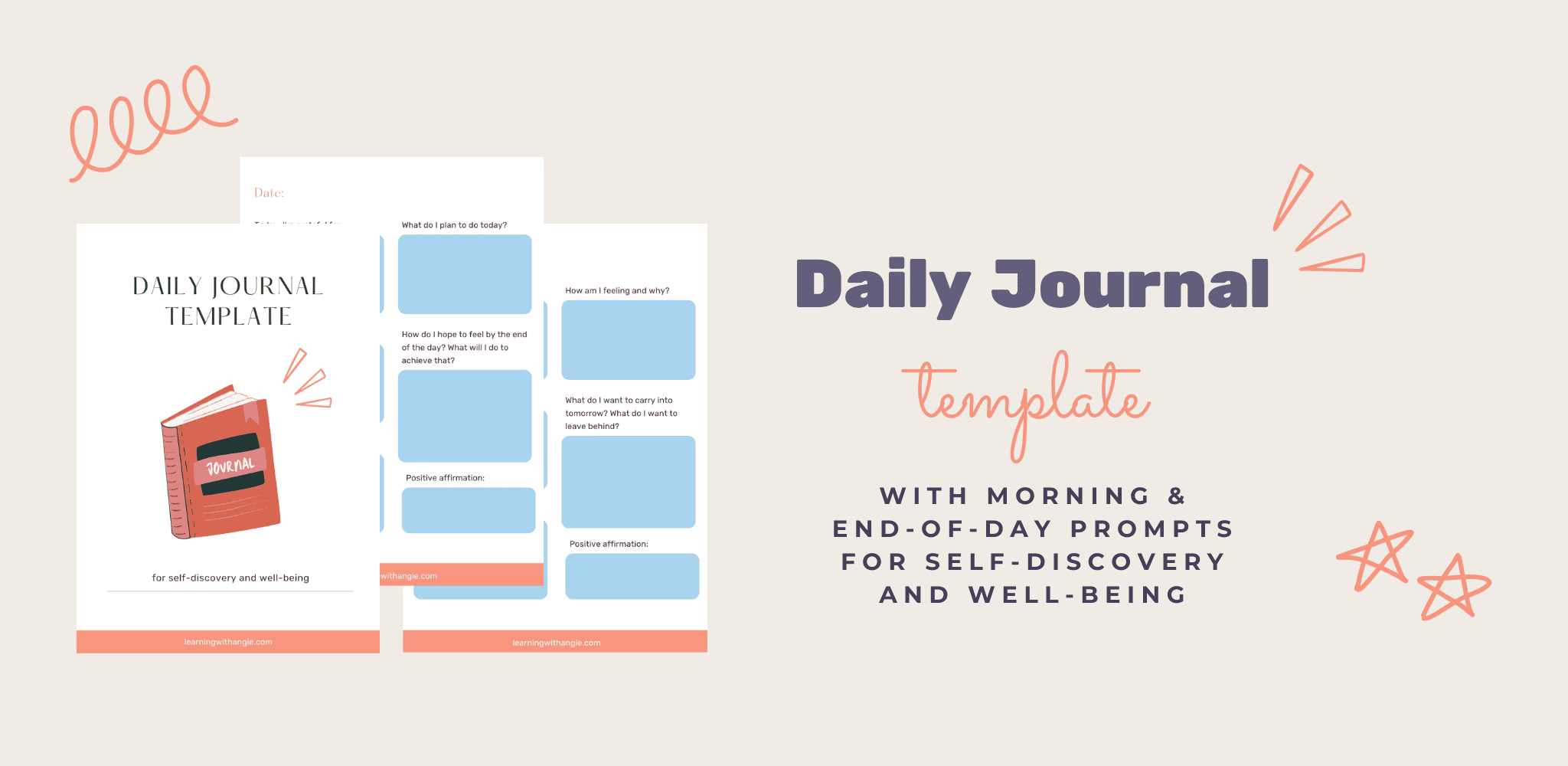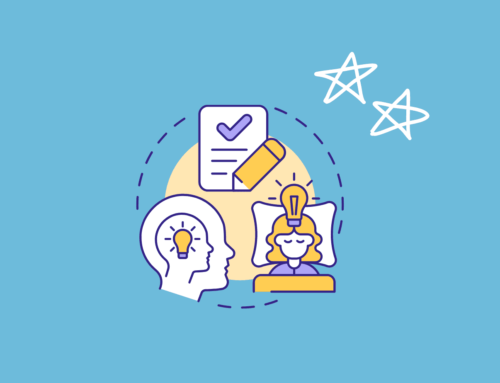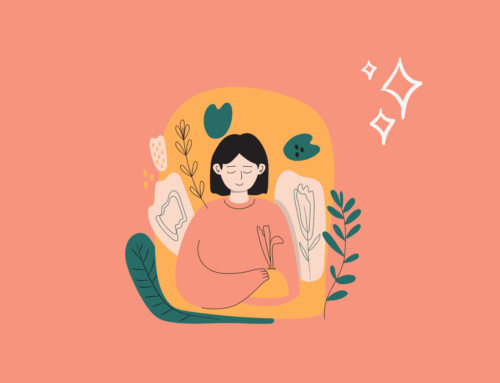

You might be feeling lost right now. Perhaps you feel a lack of direction in your life. Or you feel stressed by others’ expectations. Or maybe something happened that made you question your identity entirely.
You may even be feeling disappointed and ashamed that you feel this way. Thoughts like I should be doing something more or I need to get my life together but I don’t know how may be swirling through your head.
This post may contain affiliate links, which means that when you make a purchase through a link, I make a small commission at no extra cost to you.

(Or perhaps, you’re just here to learn about what you can do to make the most of your teenage years.)
In either case, I’ve been in the first scenario before””feeling all over the place, doubtful of my abilities, and ashamed that I felt so confused. Although I won’t delve into personal details here, many unexpected challenges surfaced that forced me to question a lot of things in my life.
This eventually led me to feel stagnant, unproductive, and unhappy. And I didn’t know what to do. However, at the same time, I felt that I was letting myself, my parents, and everyone else who had high expectations for me down.
Around this time, I decided to pick up a book called Think Like a Monk. Reading this book and contemplating about its applications in my life helped me A) gain more clarity in my life and B) take action to improve it.
Disclaimer: Reading this book is not a substitute for professional help. The content in this post is for informational purposes only””it is by no means a substitute for professional advice from a doctor or therapist.
In this article, I share 6 crucial tips I learned on how to live life to the fullest as a teenager (and beyond).
These tips will help you:
- Find greater purpose and fulfillment
- Find joy in daily routines
- Swap negative thoughts for productive ones
- Overcome major disappointments or challenges
Brief Intro to Think Like a Monk
Before jumping into the main content of this article, I want to take a quick moment to talk about Think Like a Monk. It’s a book written by Jay Shetty, a former monk who was a Hindu monk for 3 years before returning to his home in Britain.
After returning home, he felt like a failure for not being able to live the lifestyle he had chosen. His parents didn’t know what to tell acquaintances””that their son who was a monk had chosen not to be a monk anymore””and he hardly knew what to do with his life after this full 360.
Ultimately, however, he carried over the lessons he learned as a monk into his new life. As a result, he was able to turn his life around and is now a world-famous life coach and entrepreneur.
In Think Like a Monk, he explains how the lessons he learned as a monk can be applied to daily life to find greater purpose and satisfaction.
What Does It Mean to Live Life to the Fullest as a Teenager?
I promise””one last thing before getting into the tips in this post. A lot of people talk about wanting to live life to the fullest. But they don’t know what it means.
According to Shetty, living life to the fullest comprises of three parts:
- Recognizing your strengths
- Recognizing your passions
- Combining the two to make a difference

How can you achieve these things and find greater peace of mind? Keep on reading to see”¦
Tip #1: Identify Your Values
It’s easy to get so caught up in our parents’ expectations, society’s expectations, and peer pressure that we lose sight of our values. We confuse what others want for us with what we want for ourselves.
Unfortunately, living to fulfill others’ expectations leads to a lack of fulfillment in your own life.
But how do you discover your values?
First, take time for introspection
To do this, I made a table as Shetty instructs in the book, with the value in the first column, the origin in the second, and “true to me?” in the third.
For example, in the first column, I wrote down “knowledge”. In the second, I put the origin as “parent and school”. In the third, I put a checkmark because constantly expanding my knowledge is something I value.

Some other examples of values you can put down are:
- Wealth
- Kindness and compassion
- Good grades
- A particular college major/program
- A career path
The last column may be difficult to fill out for some of the values. You may be unsure of whether you align with the value or not. And that’s okay.
As young adults, we’ve hardly started our journeys of figuring out what we should do. However, differentiating between what you value and what others value can be a good starting point for discovering things that bring you fulfillment.
Second, reflect on the things that bring you joy
If you’re having trouble figuring out what your values are, think about your day-to-day activities. What activities do you enjoy? What subjects do you enjoy? What do you like doing in your spare time? Then, ask yourself, “Why do I enjoy the things I do?”

This can help you understand what types of activities bring you fulfillment.
Since reading this book, I’ve pondered a lot about this. I’ve found myself constantly checking in on how an activity or environment made me feel. I’ve realized that I thrive in environments where I can be creative and self-driven. On the other hand, I am extremely bored by environments with rigid rules and structures and little room for spontaneity.
I’ve also realized that despite being an introvert, I enjoy taking on a leadership role if it means I can give back to others in some way.
This has made me realize that some of the professions I’ve considered earlier may not be suitable for me. I’ve become more open to other activities and professions that I hadn’t considered before.
Third, be open to exploration
Wanting to live life to the fullest as a teenager is ambitious. That’s because as young adults, we hardly know enough about ourselves to understand our “purpose in life”.
I’m here to tell you that that’s okay. I know I said that living life to the fullest means finding your strengths and passions and combining them to make a difference.
But the truth is, accomplishing all of that as a teenager can be unrealistic. However, what you can do to make the most of your teenage years is be open to new experiences.
After all, only by broad exposure can you recognize your strengths and passions. Don’t be afraid to try new activities or meet new people””it’s all part of the journey of self-discovery and self-improvement.
Fourth, surround yourself with inspiring people
Research shows that habits and attitudes circulate within social circles. Maladaptive habits, like gossip and aggression, can spread, but productive habits, like compassion and empathy, can also spread.
Choose to surround yourself with people that can help you grow, not people who stunt your growth and make you feel less than you really are.

Tip #2: Be More Present in Everyday Life
Reading Think Like a Monk made me realize just how “not present” I’ve been in my everyday life. In fact, according to a research study done at Harvard, people spend almost 47% of their day on autopilot””thinking about things other than what they’re doing.
Shetty talks about this too. We live most of our moments in life wishing for the next “exciting” thing to happen.
When you’re doing homework, you’re probably thinking, “I wish I were hanging out with my friends.” When you’re washing dishes, you’re probably thinking, “I wish I could be watching Netflix instead.”

But if you treat life like it’s only worth living for the few, sparse “exciting moments,” you spend most of your life not appreciating it for what it is at all.
How do you become more present?
To live life to the fullest as a teenager and beyond, you must realize that your attitude determines how exciting or gratifying an activity is. It’s not about the activity itself.
In Think Like a Monk, Shetty talks about how he and the other monks would go on the same walk every day. They were instructed to notice something new about the walk every day””it could be something as simple as a small rock they’d never seen before.
The point is that we must find joy and wonder even in the mundane.
When doing homework, think about how you’re expanding your knowledge. Or, even if it’s busy work, focus on how you’re building diligence and discipline. To switch up your study space, light a seasonal candle or rearrange your desk setup a bit.
Recognize or add new elements to your routines. Be more present, and you will find yourself appreciating the small daily joys of life, instead of only living for the grand and exciting, but sparse occasions.

Tip #3: Let Go of Negativity
As humans, we spend a lot of time wallowing in negativity. “If only I had this”¦” or “If only this had happened”¦”
However, negativity blurs our view and obstructs us from our potential.
Of course, life is filled with unexpected challenges””it’s impossible for life to be “all good”. Bad things happen””we don’t get the opportunity we worked so hard for, or someone we’re close to hurts us.
Discouraging and distressing events are inevitable. But by changing the way you respond to them, you can further your potential instead of limiting it.
How do you let go of negativity?
Letting go of negativity isn’t easy. It’s not an overnight process. It’s not even a yearlong process. It’s something you have to work on every single day.
Now, this may sound discouraging, but like any other habit, it’s something you get better at if you stick to it.

In Think Like a Monk, Shetty discusses the “Spot, Stop, Swap” method. Here’s how it works:
Spot

Consciously recognize your negative thoughts.
Stop

Once you’ve caught your negative thoughts or speech, limit them. Take a moment to think about where your negativity is coming from.
For example, if you realize your criticism of someone stems from jealousy, identify what you envy the person for. Oftentimes, criticism of someone else stems from underlying insecurities.
After all, we wouldn’t feel the need to drag someone else down to elevate ourselves if we were truly self-confident.
Swap

Recognize that negativity originates within yourself, not from external circumstances. Fortunately, just as negativity originates within yourself, so does positivity.
Complaining about something doesn’t make the situation better. Criticizing someone else doesn’t elevate you. Instead, switch the negative mindset to a productive one.
To live life to the fullest as a teenager and beyond, stop focusing on what you can’t control. Instead, focus on what you can control.
If you missed an opportunity that you were working towards, don’t wallow in disappointment. Instead, recognize that one missed opportunity doesn’t define you, and begin looking for other ones.
Often, if you’re feeling distressed, disappointed, or overwhelmed, the best thing to do is to take a step back. That leads me into the next tip”¦
Tip #4: Focus On the Bigger Picture
Life isn’t a smooth ride; it’s a bumpy one, and unfortunately, not one that always goes up. If you’re going through something difficult at the moment, know that it will get better.
Seriously. It might be hard to believe at the moment, but often, all it takes is a bit of perspective. Take a step back and see the longer road ahead.

Whatever you’re going through right now””a fallout with a close friend, a major disappointment, a life-changing event””in a few weeks, months, or years (depending on the significance of the event), it will seem like a small blip in the past.
How do you adopt a broader perspective on life?
It’s very easy to get completely absorbed in day-to-day conflicts, struggles, and disappointments. Unfortunately, life can be unexpectedly harsh and cruel, and that’s unavoidable.
However, it’s important to realize that the challenges in life are necessary experiences.
Life is not about the major milestones. Life is worth living for the journey””every obstacle, failure, and success shapes who you are, no matter how big or how small.
Think of the struggles in your life as elements of a larger storyline. After all, the hero/heroine in every novel has to face trials, extreme stress, and disappointment. However, those struggles are necessary for the hero/heroine to learn, grow, and become stronger.

Not only should you see every struggle as a learning experience, but you should see every small step you take as a valuable experience.
If you experience a major disappointment, don’t think that everything in the past was a waste. That’s because every small step you took in the past, every struggle or uncertainty you overcame has made you a stronger, more knowledgeable person.
If you decide to make a life-changing decision to drop something you originally pursued for something else, don’t think that everything before was a waste. Similarly, every small step you took in the past was necessary in leading you to this moment of self-discovery.

Life is a journey with many ups and downs. When we’re feeling down, we need to take a step back to see the “ups” in the future and the “downs” we’ve overcome in the past.
Tip #5: Develop a Positive Relationship With Yourself
Our minds can be a scary place. It can be our worst enemy or our greatest friend.
Speaking as a young adult myself, I know that feelings of low self-esteem can be frequent and distressing. It’s easy to let a bad grade or unsatisfactory performance in a competition make you self-critical and doubtful.
I speak as someone whose greatest competitor has always been”¦ myself. I’ve always set extremely high expectations for myself. And when I couldn’t meet those expectations, I would push myself to work harder, ignoring the physical or mental strain.
But as I’ve now realized, that wasn’t healthy.
Beating yourself up for not achieving your goals or not living the life you want doesn’t change anything. It just damages the relationship you have with yourself.
When you damage the relationship you have with yourself, you can’t live life to the fullest.
How do you develop a positive relationship with yourself?
First, let go of limiting beliefs
When you sit down and think about it, you might be surprised by the limiting beliefs you have. We repeat certain beliefs to ourselves so often that they subconsciously guide our daily actions. As a result, we limit our potential.
In Think Like a Monk, Shetty explains how we must pull these limiting beliefs into the conscious and swap them with productive thoughts.

When I was younger, I was extremely shy, timid, and quiet. Even when I wanted to pitch in a group discussion, I would always tell myself, “Other people will think my ideas are dumb. It would be better not to voice them.”
Luckily, I participated in activities in which I was compelled to speak up in discussions. At first, I was terrified.
However, I realized that the belief that others would react negatively to my ideas was false. Now, when my old fear creeps up, I tell myself, “My ideas are worth voicing. They can help my team consider options they hadn’t noticed before. And even if my ideas aren’t implemented, that’s what discussions are for””to throw ideas out there and consider the different options.”
So if you have thoughts like, “I’m not cut out for this” or “I’m not good enough,” cut out those negative thoughts. Recognize that they are false beliefs that are limiting your potential. Instead, swap them for positive, productive thoughts.
Second, treat yourself with kindness
After a major disappointment, it’s easy to fall into the trap of being highly self-critical.
If you didn’t win an award you worked towards, you may tell yourself, “You worked super hard, but you’re just not smart enough.”
Or, when feeling extremely unmotivated, you may tell yourself, “See how easily you burn out? You’re just not good enough””not hard-working enough, not strong enough.”

However, in Think Like a Monk, Shetty describes what he calls the “monkey mind” and the “monk mind”. The “monkey mind” is the child-like side of our brain that seeks immediate gratification and is easily overwhelmed by anxiety. The “monk mind” is the mature adult side of our brain that provides empathetic, constructive advice.
Instead of letting your “monkey mind” control your emotions and choices, you should exercise the “monk mind”. In other words, you should speak to yourself as a caring adult would to a child.

In a healthy relationship, two people help each other grow. Similarly, you should help yourself grow through compassion, kindness, and patience. You can’t do that if you’re constantly tearing yourself down through self-criticism.
Now, when I feel frustrated by a new topic I don’t understand, I tell myself, “It’s okay. I’ve been studying hard, and I’m making progress. Even though I don’t understand it yet, the effort I’m putting in and the small steps I’ve made matter.”
Similarly, in other situations where I feel frustrated with myself, I try to speak to myself in a kind, compassionate way.
Third, realize that only you can make yourself feel whole
In the “Relationships” section of the book, a few quotes particularly stuck out to me. They were:
- “Nobody completes you. You’re not half.”
- “You need to be someone who makes you happy.”
In other words, you can’t look to other people to fix dissatisfaction in your life or give you a sense of self-worth. Yes, you can look to other people for guidance and support.
But at the end of the day, only you can make yourself feel whole and happy. Therefore, you must spend time working on your relationship with yourself.

Understand what makes you happy and what brings you fulfillment. Try to incorporate those elements into your routine more frequently.
Recognize harmful negativity and self-criticism, and swap those thoughts with productive ones.
Be a kinder, more attentive friend to yourself.
Tip #6: Give Gratitude and Give Back
Much of the negativity and lack of direction in our lives stems from A) a lack of gratitude and B) a lack of service.
We spend lots of time complaining about the things we don’t have and pining after the things we wish we had. But we don’t spend a lot of time appreciating the things we do have.
We also spend a lot of time seeking material rewards and external validation. We say things like, “I want to win ___ award” or “I want to get into ___ college” as though the end goal will bring us satisfaction.

However, when we don’t achieve the end goal, we feel distraught, uncertain, and maybe even wrecked. If you treat the quality of life as dependent on unpredictable external factors, you will never be able to live life to the fullest as a teenager and beyond.
You’ll always be seeking material rewards as a form of validation. Life will seem like a fragile bubble that can burst at any moment.
However, with gratitude and service, you can reduce the negativity and fragility in your life.
How do you express gratitude?
You’ve probably heard a lot about expressing gratitude. Nowadays, things like gratitude journaling and gratitude trends on social media are very popular.
Before picking up Think Like a Monk, I’d heard a lot about the importance of expressing gratitude but never really knew how to embrace it. Since then, I’ve learned that expressing gratitude requires two things:
Realize that you don’t own anything
Not your beloved pet, not your clothes, not the roof over your head, not your academic or extracurricular awards, not your youth, not your talents””nothing.
This seems like a harsh statement, but we tend to be dissatisfied with what we have because we focus on what we don’t have, not what we do have.
Additionally, much of our anxiety stems from a fear of losing what we “own”. But once you realize that you don’t own anything, you accept the temporary quality of everything in life.
As a result, you come to appreciate the things in life much more. They are temporary, and they don’t belong to you, but you have them, and that is a wonderful thing.
Actively express gratitude
Actively express gratitude by writing down a gratitude list, closing your eyes and mentally noting something you’re grateful for, or expressing appreciation to someone.

In Think Like a Monk, Shetty describes a study done at UCLA, in which it was shown that our brains release dopamine (a.k.a. “feel-good hormone”) when we feel gratitude.
Expressing gratitude makes you feel better in the moment and gives you a greater appreciation for life in the long term.
Why is service so essential to live life to the fullest?
Shetty states that “Seeing the purpose of life to be sense gratification””making ourselves feel good””leads to pain and dissatisfaction. Setting it as service leads to fulfillment.”
If we live in constant pursuit of material gratification, our happiness and sense of purpose will be very fragile. Instead, we need to turn to service.
If we define ourselves not by external validation””the awards we win, the grades we get, the opportunities we land””but instead by our values, such as a commitment to service, we experience much more fulfillment.

As Shetty explains, service accomplishes four things:
“Service connects us”
If you feel disconnected from others, service will help you create meaningful bonds.
“Service amplifies gratitude“
When you help those in need, you’ll become more appreciative of the things you have.
“Service increases compassion“
Service will make you a more caring, empathetic person.
“Service builds self-esteem“
If you’re making a positive difference in someone’s life, you’ll feel a greater sense of purpose.
If you’re constantly chasing after material goals for personal pleasure””a dream job, a prestigious award, a college acceptance, etc.””your happiness and sense of self-worth will depend on unpredictable factors.
This is not to say that you shouldn’t pursue ambitious personal goals. However, you can choose to define yourself not by forms of external validation but by your values. And a purposeful value to have is a commitment to service.
How to Live Life to the Fullest as a Teenager
The teenage years are difficult””growing up comes with many frightening, disappointing, and distressing experiences. However, whether the challenges drag you down or make you stronger””that’s up to you.
If there’s one thing I learned from Think Like a Monk, it’s that happiness, fulfillment, self-improvement, confidence””all of it begins in the mind.
Stop waiting for things to happen. Make things happen.
When you find yourself having thoughts like, “If only this”¦” or “If only that”¦,” realize that whatever “this” or “that” is, you don’t need it to find happiness or fulfillment in your life.
Find ways to express gratitude for the things you already have. Find ways to discover novelty and excitement in the present.
Let go of limiting beliefs that obstruct your potential. Don’t be afraid of exploring new things and making mistakes””it’s all part of the self-discovery process.
As a teenager, you don’t have to have everything figured out. In fact, that’s entirely unrealistic. But you can start to live your life to the fullest as a teenager by changing your mindset””your relationship with life’s ups and downs, with others, and with yourself.

I know it’s not easy. As Shetty repeatedly emphasizes, adopting the “monk mindset” is a constant, never-ending journey. Life can be hard, and you don’t need to be “put together” or happy every day.
But you can start figuring out the values you want to live by and be purposeful in living by them.
If you want to live your life with more purpose and fulfillment, I highly suggest getting a copy of Think Like a Monk. This book has helped me adopt a more positive, productive mindset, even towards things I once found discouraging and painful.
Although I’ve covered some of my main takeaways in this post, reading the book will provide you with much more detailed insight into actionable steps to live life to the fullest.
From letting go of fears to developing healthy routines to avoiding overthinking to building healthier relationships (the list goes on), Shetty comprehensively covers mindset changes you can make now to “train your mind for peace and purpose every day”.
For more posts on inspirational books to unlock your potential, check out these links:

Learning With Angie is a place to share honest, unfiltered advice to promote student success. So if you’re a student (high school, college, or beyond) looking for tips on productivity, studying, personal growth, and more to reach your potential, this is the place! To read more about Learning with Angie, click here.


















